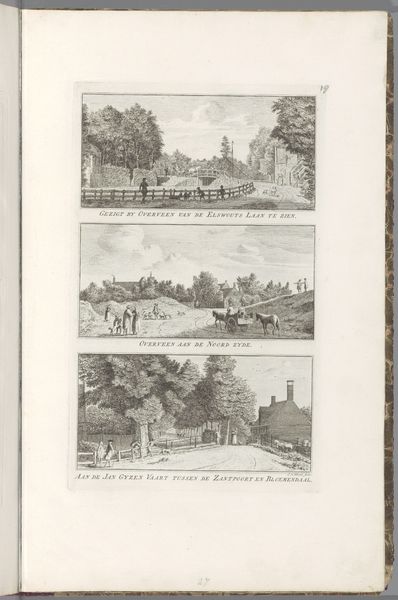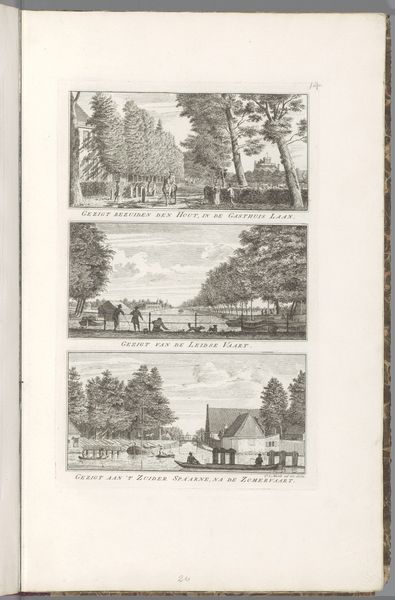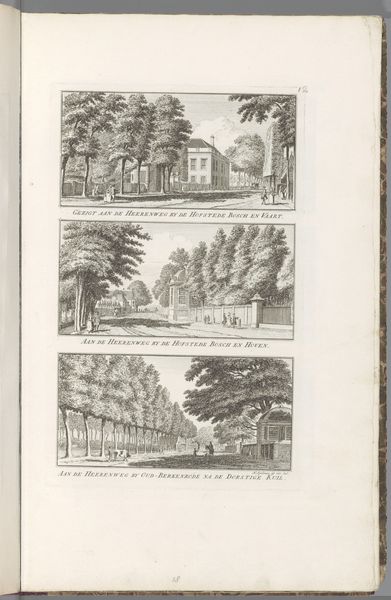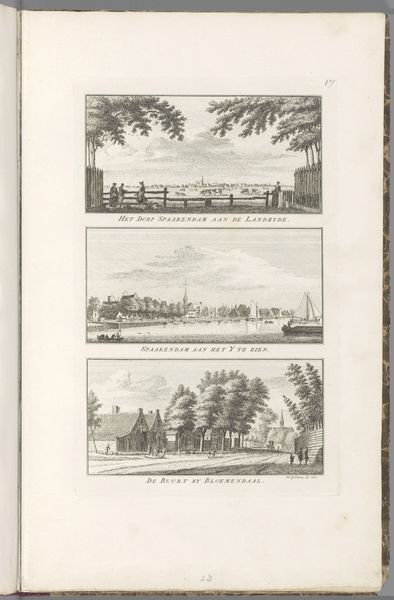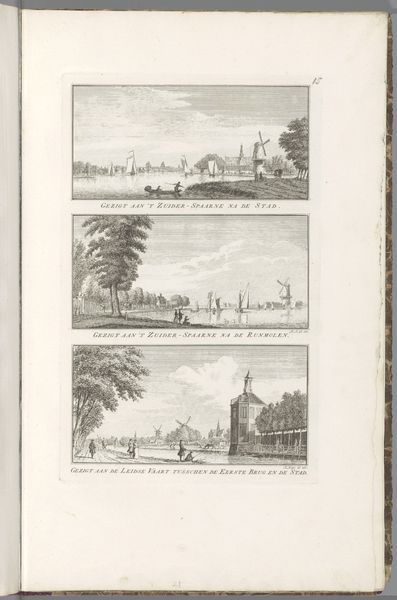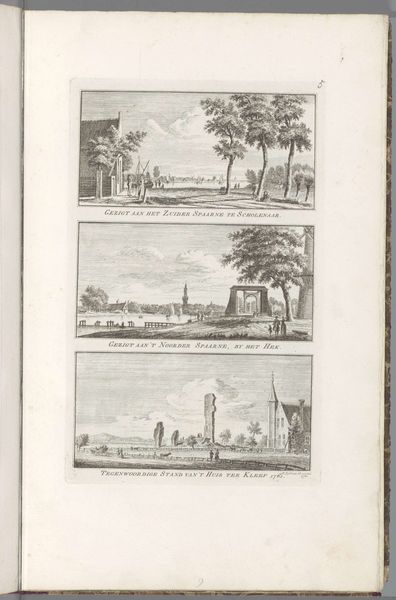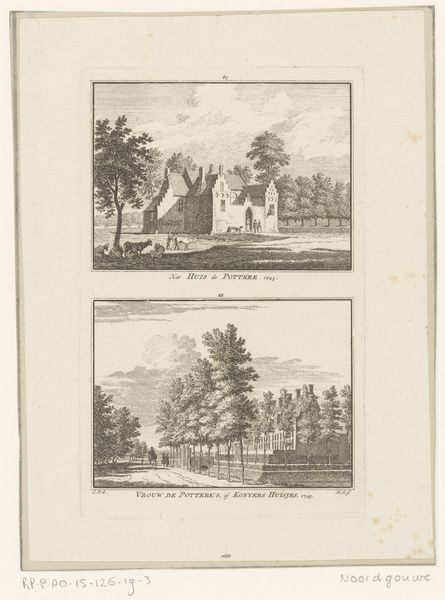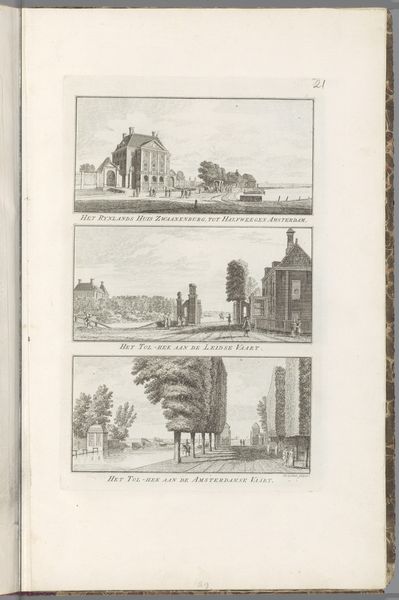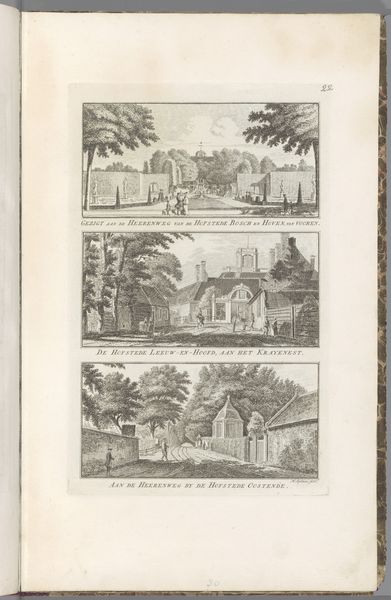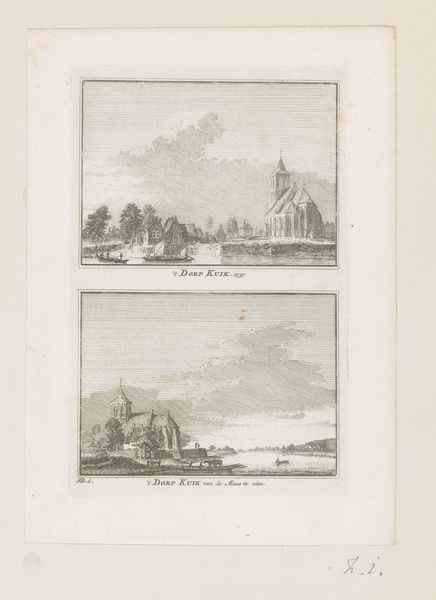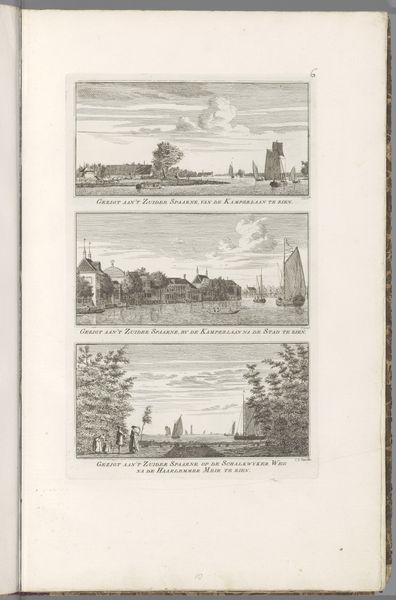
Dimensions: height 297 mm, width 188 mm
Copyright: Rijks Museum: Open Domain
Curator: This engraving, made between 1762 and 1763, is titled "Views of the Herenweg near Heemstede." Hendrik Spilman captured three distinct vistas along this road in the Dutch landscape. It's currently held in the Rijksmuseum collection. Editor: The eye moves almost seamlessly between the three vignettes; it's an interesting way to portray a single locale by varying the view slightly. Curator: Indeed. Let’s consider the Herenweg itself. Roads like these were crucial arteries of commerce and social exchange. We can ponder, who typically used such roads, and what social implications that brings. For example, consider the status differences between someone walking vs. riding a carriage and how Spilman plays into or resists the established hierarchy. Editor: From a formal perspective, notice the repeating motif of trees lining the avenue; it structures the composition and provides a strong linear perspective, drawing the viewer's eye into the distance. The engravings play beautifully with light and shadow, a real mastery of the technique, don’t you agree? Curator: Absolutely. Engravings allowed for mass distribution of imagery, providing more common viewers access to landscapes they might otherwise only experience through text. Furthermore, Spilman doesn't merely depict the road. He’s subtly mapping out class, mobility, and the lived experience of the landscape. Editor: Also notice the level of detail achieved; see how he delineates the textures of the foliage with such delicate lines and captures the light playing across surfaces! It’s not merely representation; it is an articulation of materiality and texture, a celebration of form in its own right. Curator: That brings me to another crucial point: this road served not only functional but symbolic purposes. Landscapes such as this project ideas of progress, enlightenment ideals of travel and the intersectionality of human interaction within it. I can't help wondering who populated these spaces and what their stories might have been, hidden beneath the layers of pigment and representation. Editor: For me, it showcases a Baroque engagement of the line itself, which results in this wonderful, unified observation. There's something almost photographic about the way he's frozen the image. Curator: Spilman gives us visual breadcrumbs, inviting us to look beyond mere appearances and dig into the histories woven into this image. It invites me to revisit ideas about intersectionality, landscape and society. Editor: It shows us that art gives endless interpretations for endless minds. Thank you for exploring its layers with me!
Comments
No comments
Be the first to comment and join the conversation on the ultimate creative platform.
